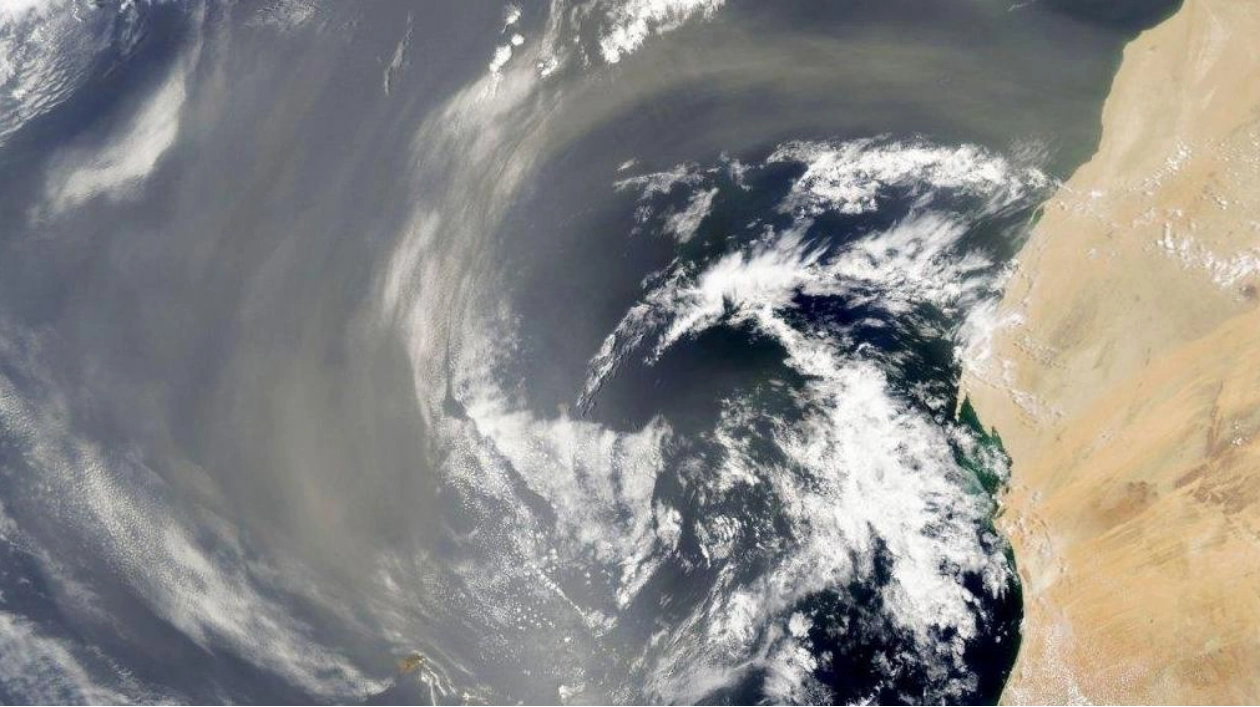A new study suggests that as dust from the Sahara travels thousands of kilometers across the Atlantic Ocean, it becomes increasingly nutritious for marine microbes. Chemical reactions in the atmosphere break down iron minerals in the dust, making them more soluble in water and providing a vital nutrient source for iron-deficient seas, researchers reported on September 20 in Frontiers in Marine Science.
Dust clouds settling on the Atlantic can trigger phytoplankton blooms that support marine ecosystems, according to Timothy Lyons, a biogeochemist at the University of California, Riverside. “Iron is incredibly important for life,” he says. Phytoplankton rely on iron to convert carbon dioxide into sugars during photosynthesis.
By studying dust transport and atmospheric chemical reactions further, scientists could gain a better understanding of why certain parts of the ocean are hotspots for phytoplankton and fish. Over 240 million metric tons of Saharan dust blows over the Atlantic Ocean annually. On islands like Bermuda and the Bahamas, it turns soils red. However, much of it settles on the ocean, supplying a significant source of iron to areas far from land and rivers.
Lyons and marine geologist Jeremy Owens, then at UC Riverside, sought to answer a different question about dust: Had the types of dust settling on the Atlantic changed over the past 120,000 years? They analyzed dust-derived minerals from four sediment cores—two from the eastern Atlantic near Africa and two from farther west near North America. Their findings led to a different line of inquiry.
Globally, about 40 percent of iron in dust and soils is typically found in “reactive” minerals like pyrite or carbonates. This type of iron can be decomposed by weak acids and potentially used by life. In the Atlantic core samples, only about 9 percent of iron in the dust minerals from the western samples was reactive, compared to about 18 percent in the eastern samples. This was “the big surprise,” says Lyons.
Lyons and Owens, now at Florida State University, concluded that during the dust’s transatlantic journey, more and more of its reactive iron was altered—attacked by acids and ultraviolet radiation, which broke apart the minerals. “There are photochemical transformations that tend to make the iron more soluble” in water, says Lyons. As this modified iron settles into the ocean, it dissolves and is consumed by phytoplankton. The only reactive iron that reaches the seafloor is the portion that wasn’t altered during air transport or later consumed.
Their results suggest that the farther the desert dust travels, the less reactive iron remains. By triggering phytoplankton blooms, dust-derived iron may also support small fish and other plankton-grazing animals, as well as their predators. A recent study indicated that Atlantic skipjack tuna, a commercially important fish, are attracted to areas where Saharan dust has settled.
The new findings are plausible because previous studies have shown that iron minerals react in the atmosphere, says Natalie Mahowald, an atmospheric scientist at Cornell University. However, she notes that Saharan dust isn’t the only source of iron; some of the iron in the samples could have come from smoke from North American wildfires over the past 120,000 years.
Identifying the source of deep-sea dust can be challenging. But Owens and Lyons attempted to trace the dust’s origin by measuring the ratios of iron to aluminum and the ratio of light to heavy iron atoms in their samples. Both measurements were consistent with dust from the Sahara. Future analyses of sediment from more Atlantic sites could provide a clearer picture of how dust has traveled across the ocean and chemically transformed.






